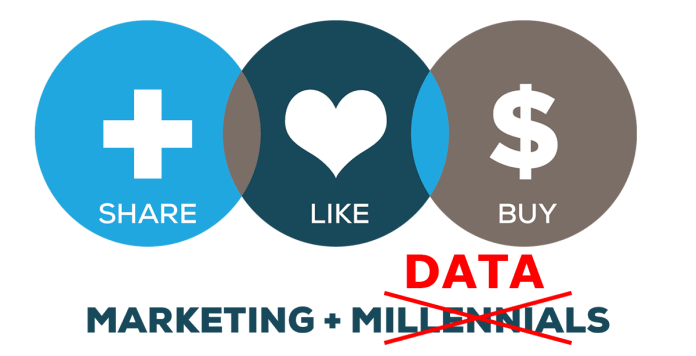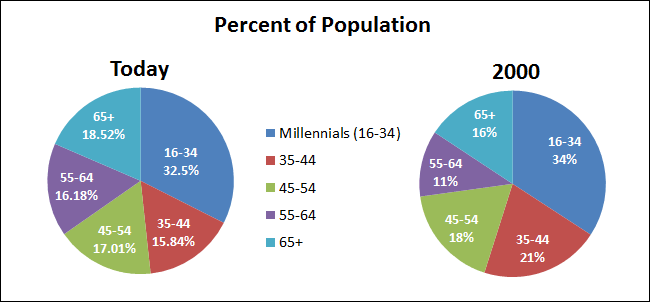
It is amazing how many large companies talk about how they are boosting their efforts to capture the attention of millennials. “We need to tap into the millennials” and “How can we improve our brand to target millennials more effectively.”
Please – stop chasing millennials. Instead, use data to drive marketing,
Sure, the Millenials generation is the biggest cohort in history – representing 32.5% of the US population. Focusing your marketing efforts using a blanket approach to consumers in this group is pointless when you have access to powerful tools which can turbo-charge marketing results.

Here’s why:
It’s like saying – we’re only going to sending marketing material to people with brown hair. Everyone’s talking about customers with brown hair having more disposable income, and these digital nomads are ‘mobile first’, and… and…
Newsflash: Within this age segment of the population are millions of sub-sets and micro-groups which, while they may fit the age profile of your latest marketing campaign – they will have nothing else in common with other millennials. The fact is – millennials are unique, and even if you don’t think they are – THEY believe that they are special. To effective communicate to this audience, you need to break down the segment into smaller bite-sized pieces, into groups which are hyper-tailored to their specific interests and behavioral patterns.
How do we target millennials?
As an established business, you have access to rich and powerful data sources which should be your immediate GO-TO for any marketing campaign. Who are your best customers to date? Do you know the real LTV of a customer? Which customers buy nothing, but are influential over other customers? What drives each segment to purchase? Who drives them to purchase?
With these questions in mind, it’s time to stop listening to anyone who has a vested interest in spending your marketing dollars (I’m looking at you – media buying agencies). JPMorgan Chase recently cut the number of websites their media displayed on from 400,000 down to 5,000 websites and saw almost no drop in performance.
Audience segmentation is your guiding light. Follow it.




